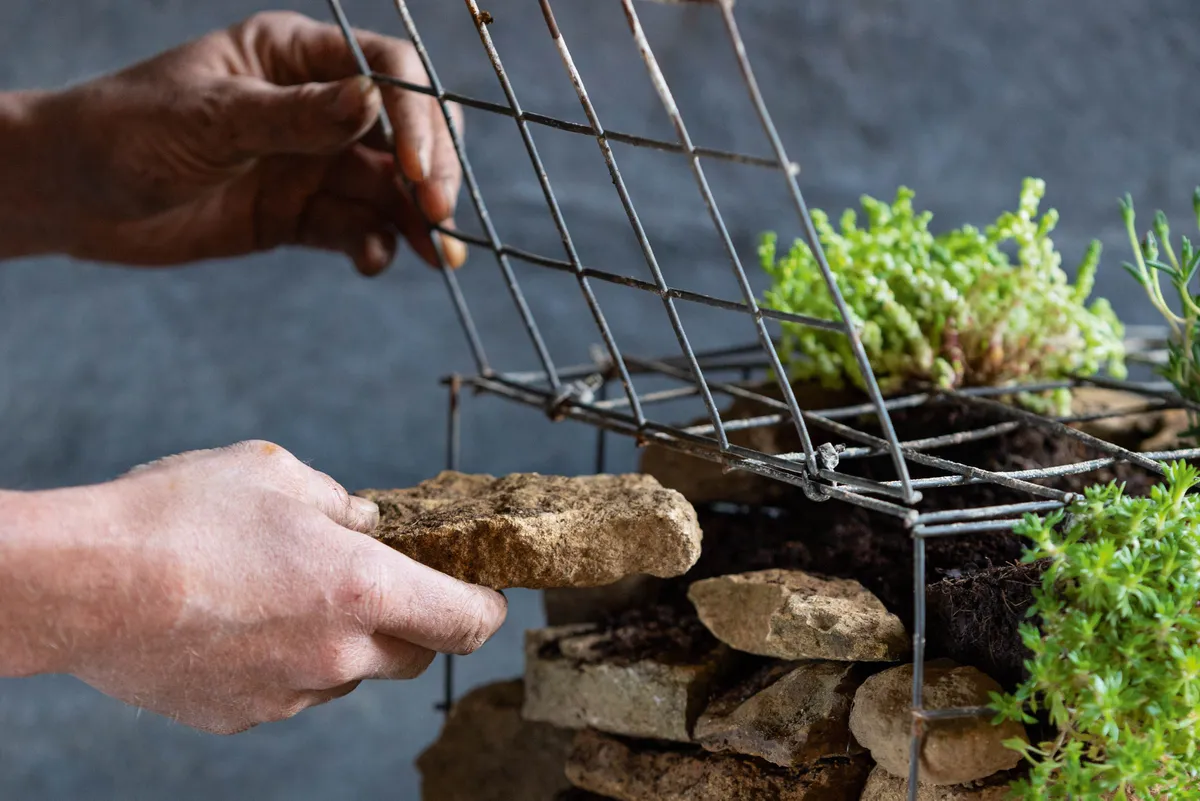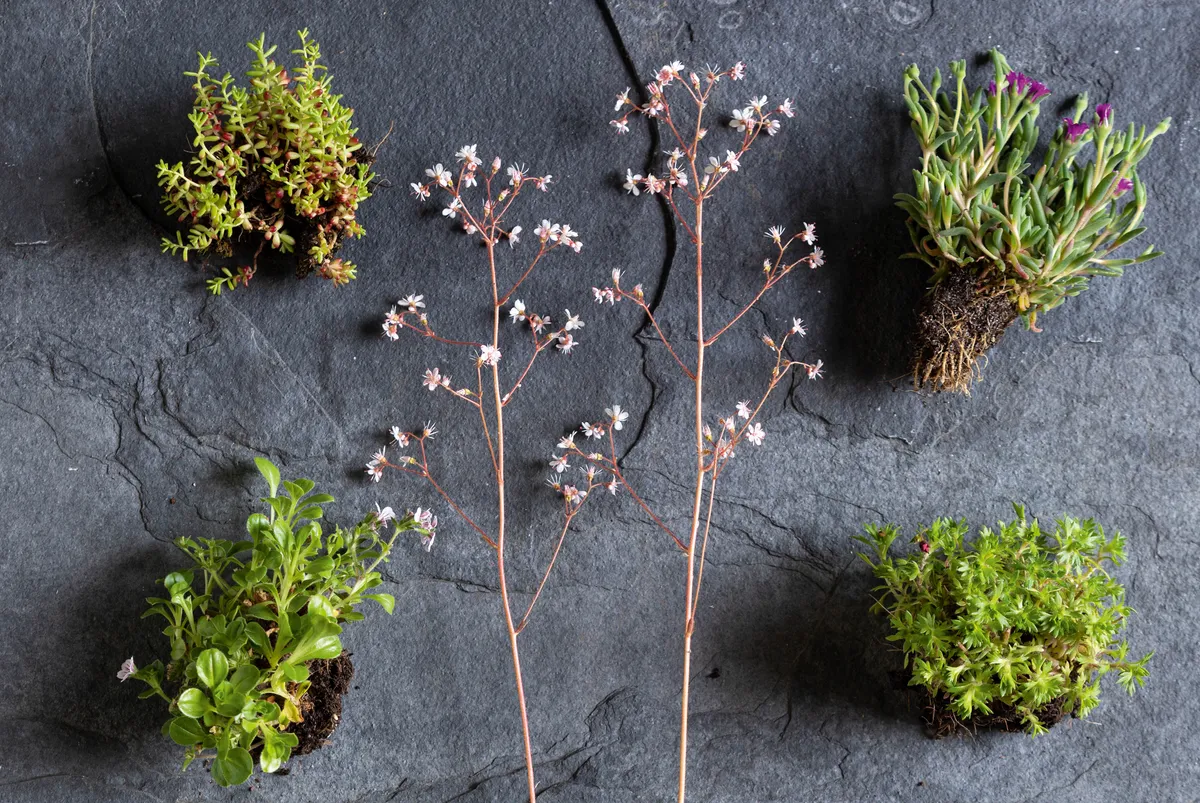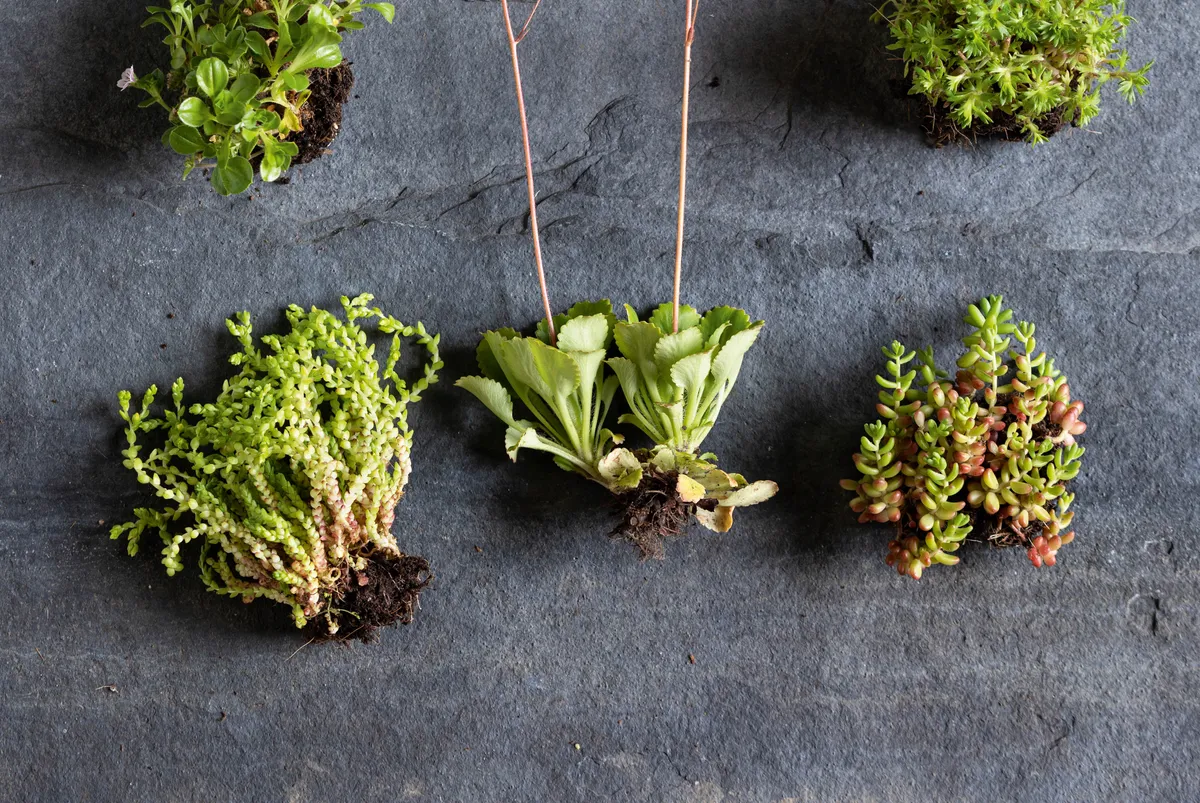On holiday in Yorkshire recently, I was fascinated by the old dry-stone walls and the huge array of plant life surviving in such inhospitable conditions. I wanted to recreate this in some way on a more manageable scale. This gabion-style build is perfect for showcasing alpines – a quirky, modern alternative for plants that would traditionally be grown in troughs. Attractive, tough and low maintenance, alpines are a great choice for anyone to grow.
How to achieve the look
Container and composition

The cage retains the stone and adds stability to the structure. Using wire cutters, cut six equal squares of galvanised mesh. Attach the squares to form a cube using strong wire or cable ties, leaving one side open for access.
I used honey-coloured stone, in keeping with my local area, but any fist-sized rocks would do. Make a layer on the base of the cube, then build up around the edges of the cage, overlapping the stones and leaving gaps for planting.
Fill the centre of the cube with multi-purpose compost and finish with a top layer of stone. I squeezed the rootballs of the alpines into the gaps between the stones and teased the foliage through the cage. The saxifraga adds height, while the sedums will trail down the sides.
Cultivation and care
- Alpines are tough, low-maintenance plants, adapted to the harsh conditions of their native mountainous environments. They are fairly tolerant to drought, but are susceptible to drying out until they are fully established in displays such as this, so water regularly throughout dry periods.
- Most alpines prefer full sun, so position the cube on a table or low wall that isn’t overshadowed by surrounding buildings or plants.
- Raising the container off the floor will make it easier to appreciate the beauty of the tiny, individual blooms – this is an arrangement that is best appreciated close up.
- Deadhead plants when they finish flowering and in winter move the planter under cover to prevent any waterlogging.
Plants

Clockwise from top left
Sedum sexangulare Spirals of green leaves and star-shaped, yellow flowers. Will slowly creep. 10cm.
Carpobrotus chilensis Fast-growing groundcover plant with fleshy, succulent leaves and cerise flowers. 10cm.
Saxifraga x arendsii ‘Flower Carpet’ Tough, pretty, evergreen perennial with star-shaped, pink flowers. 15cm.
Gypsophila cerastioides Mound-forming perennial with white flowers.

Bottom left to right
Sedum acre ‘Aureum’ A fast-growing, evergreen perennial with spiralling, fleshy foliage. 5cm.
Saxifraga x urbium Dense rosettes of mid-green leaves and clouds of pinky-white flowers on airy stems. 30cm.
Sedum album A tufted perennial, suitable for growing in crevices and rock gardens. 10cm.